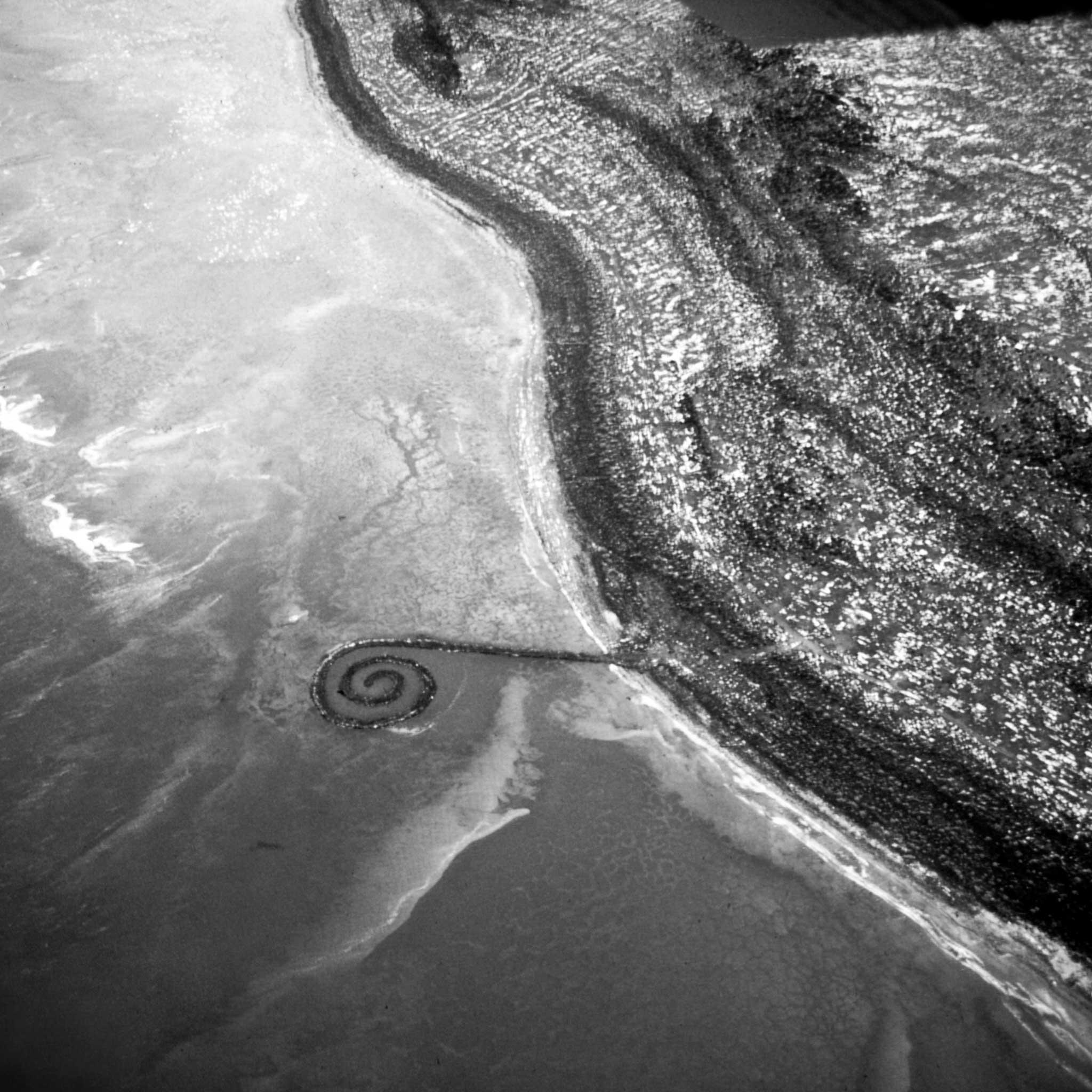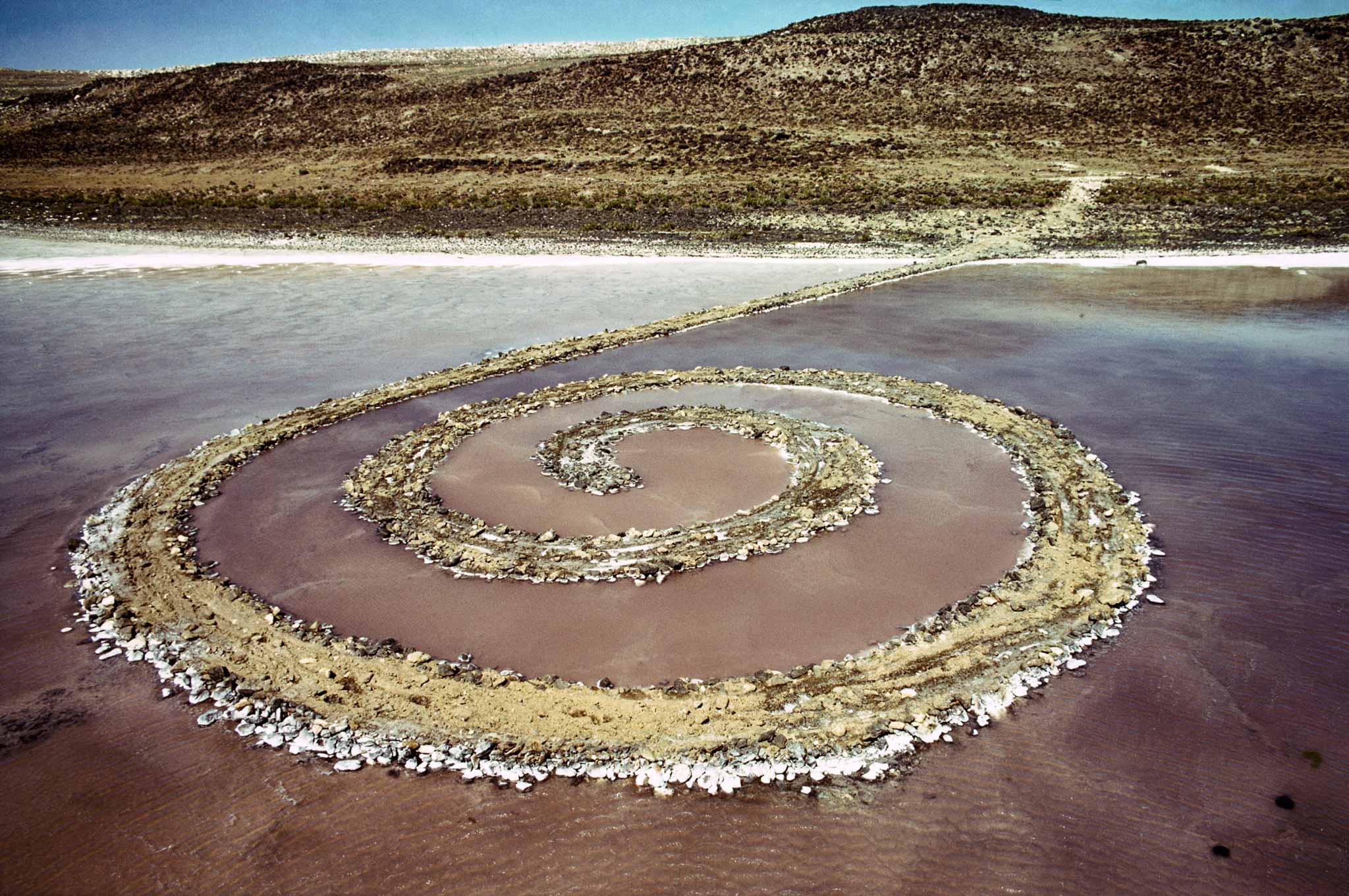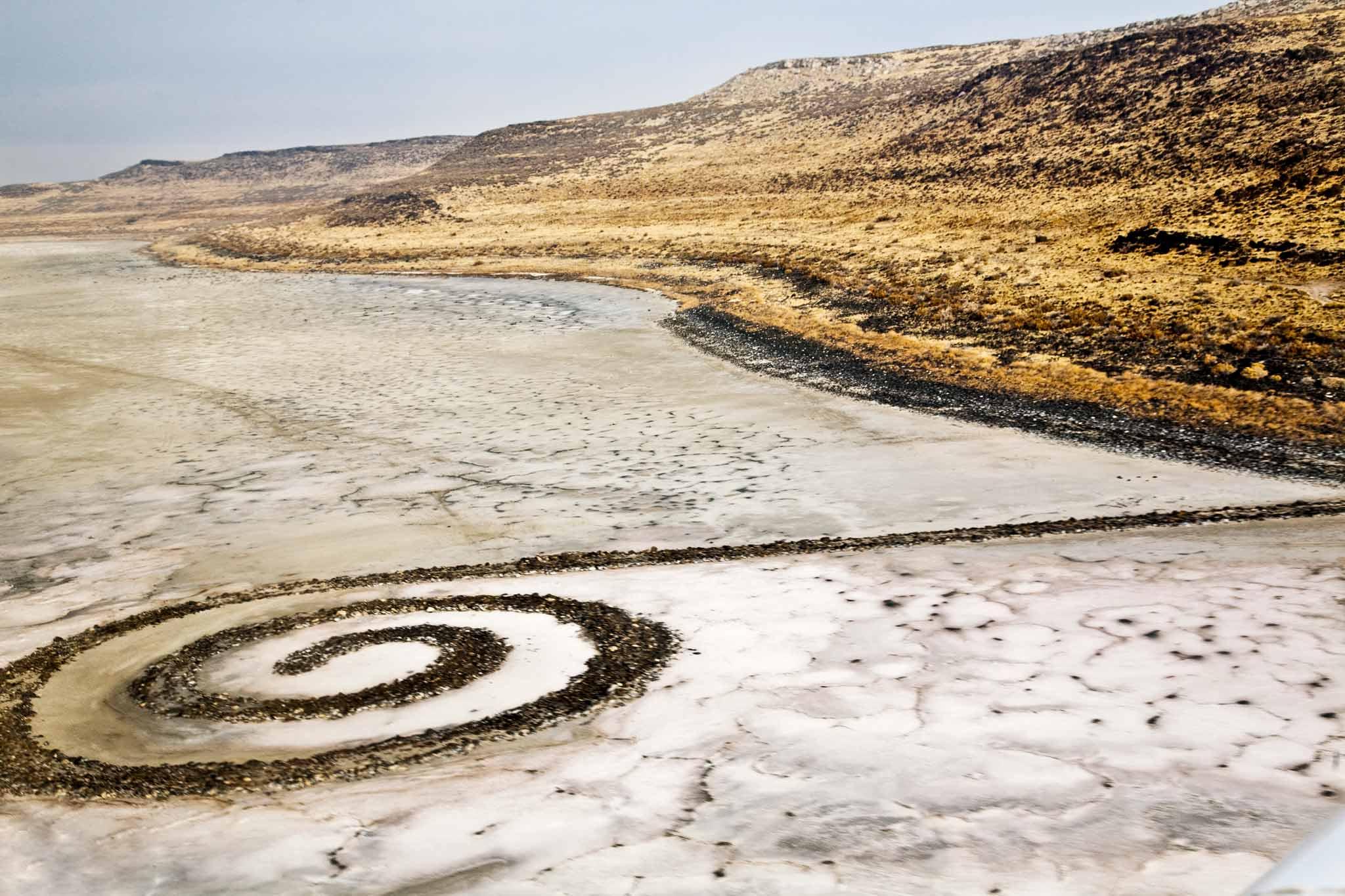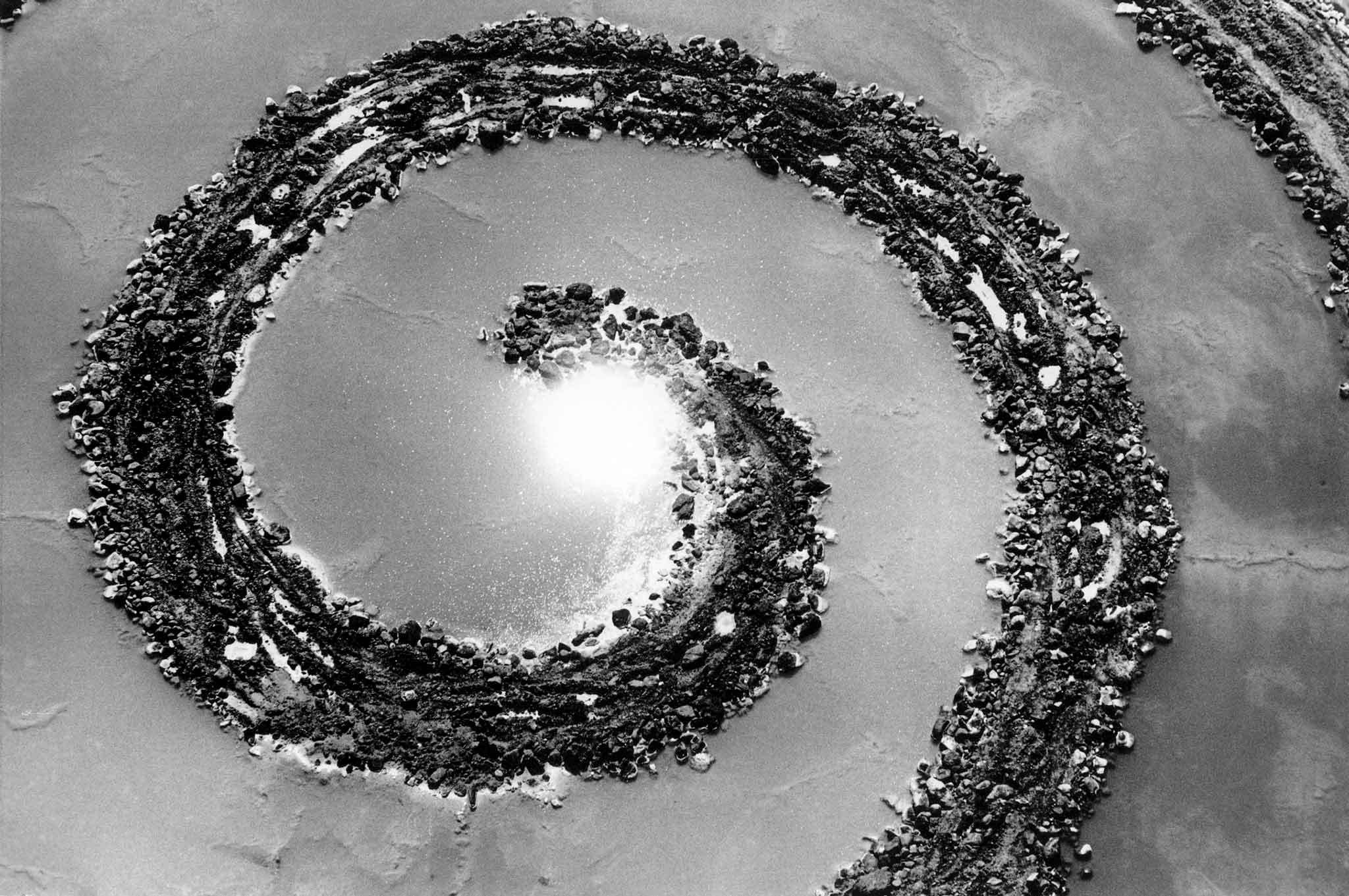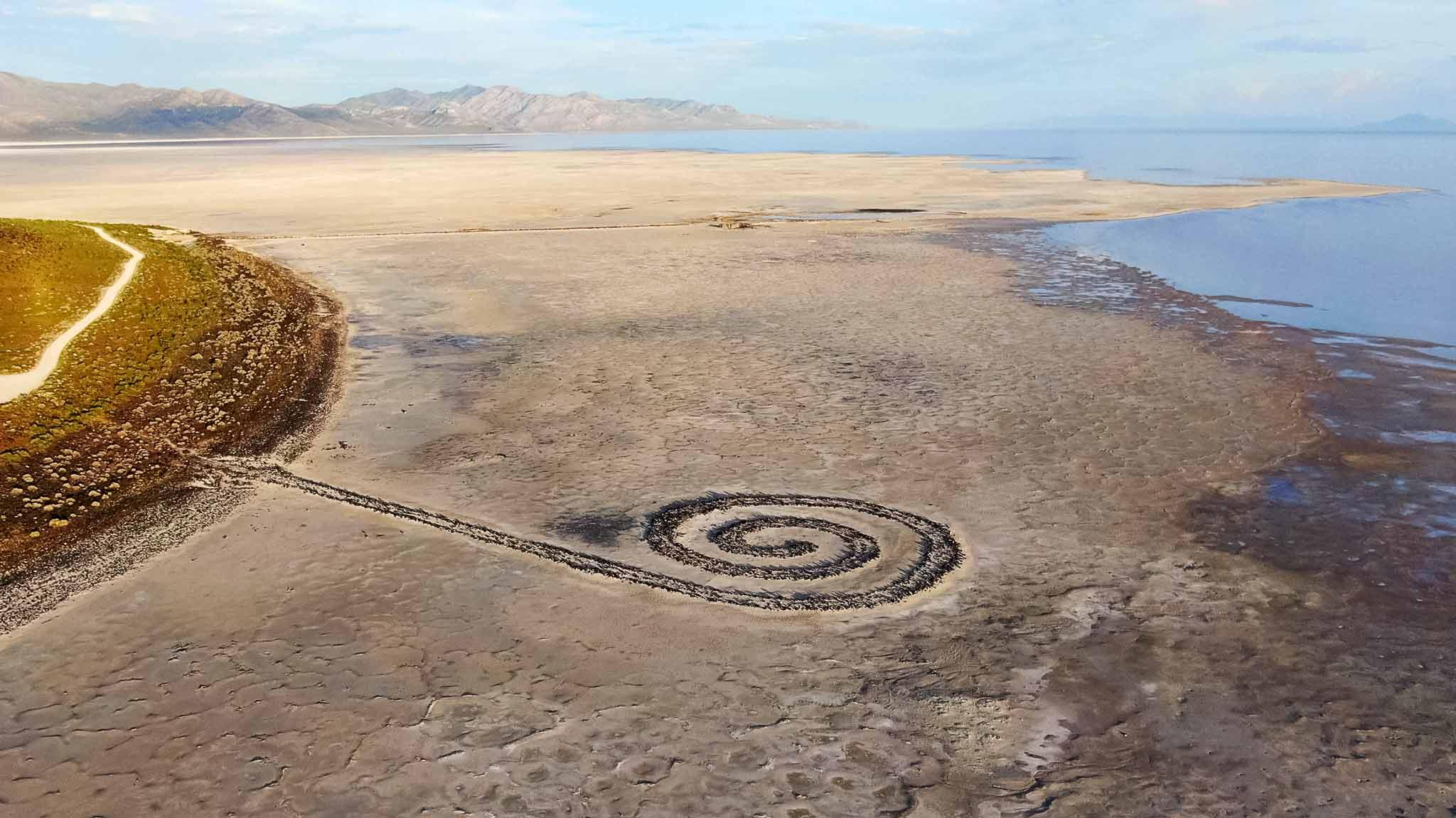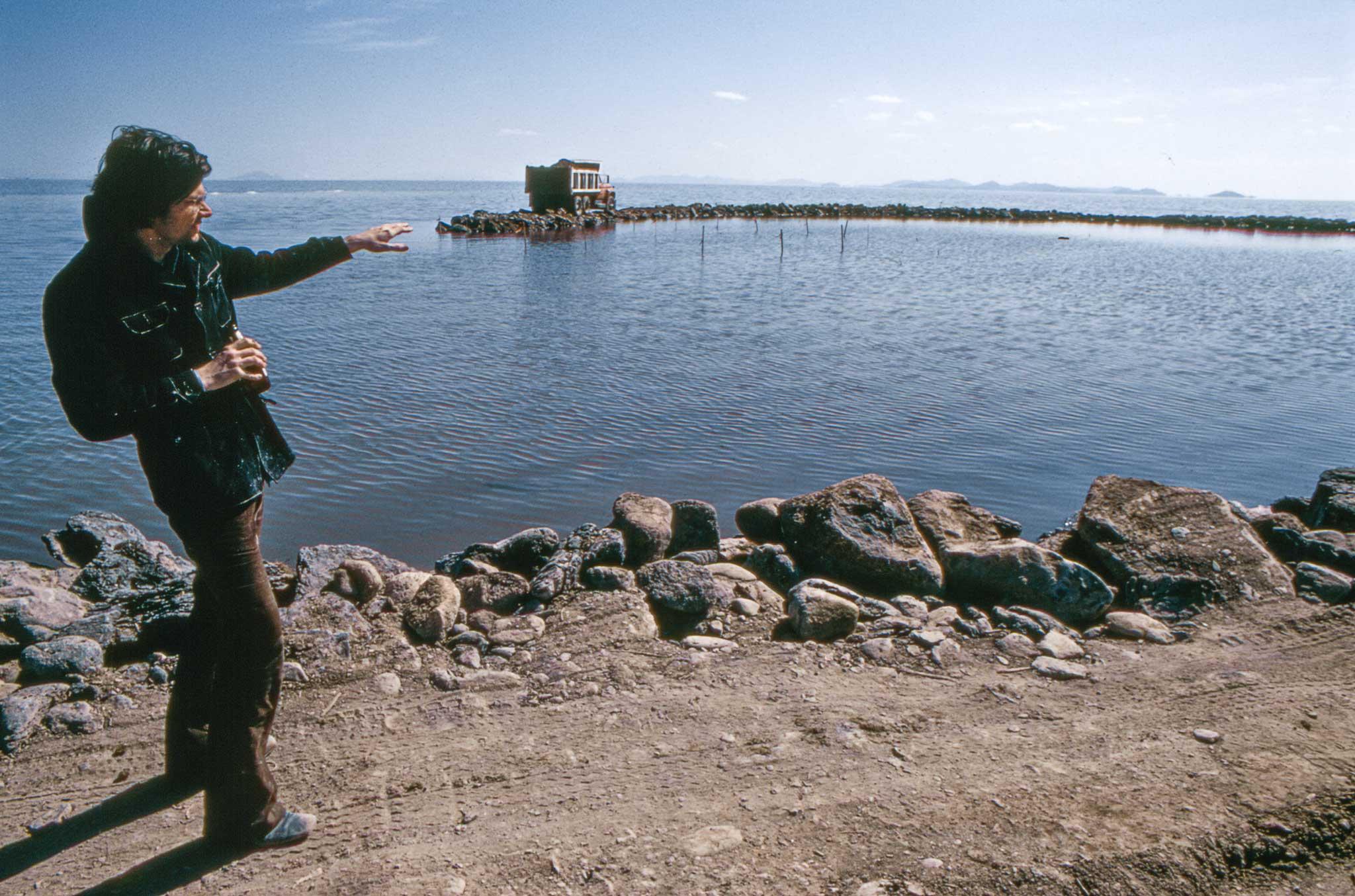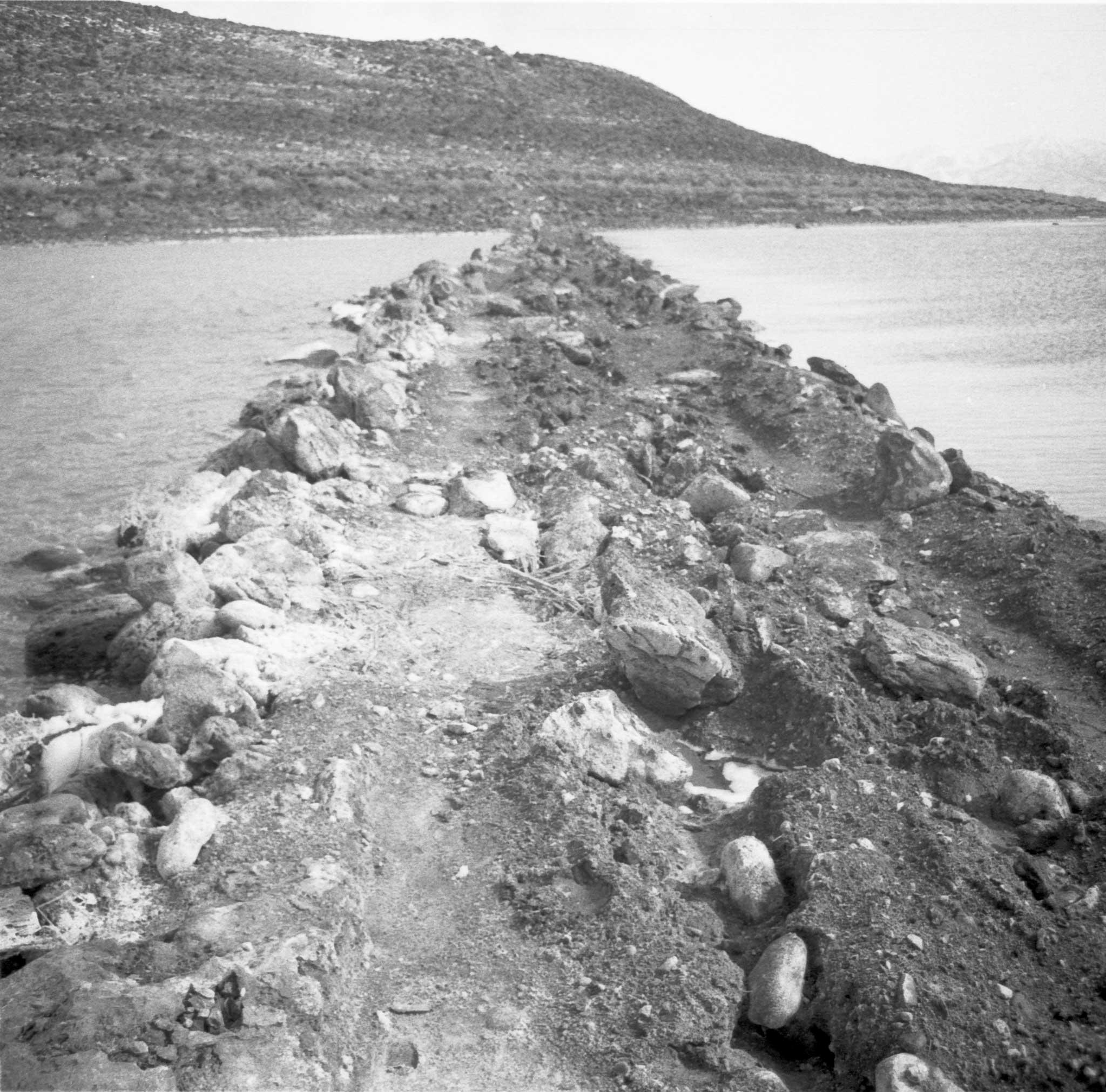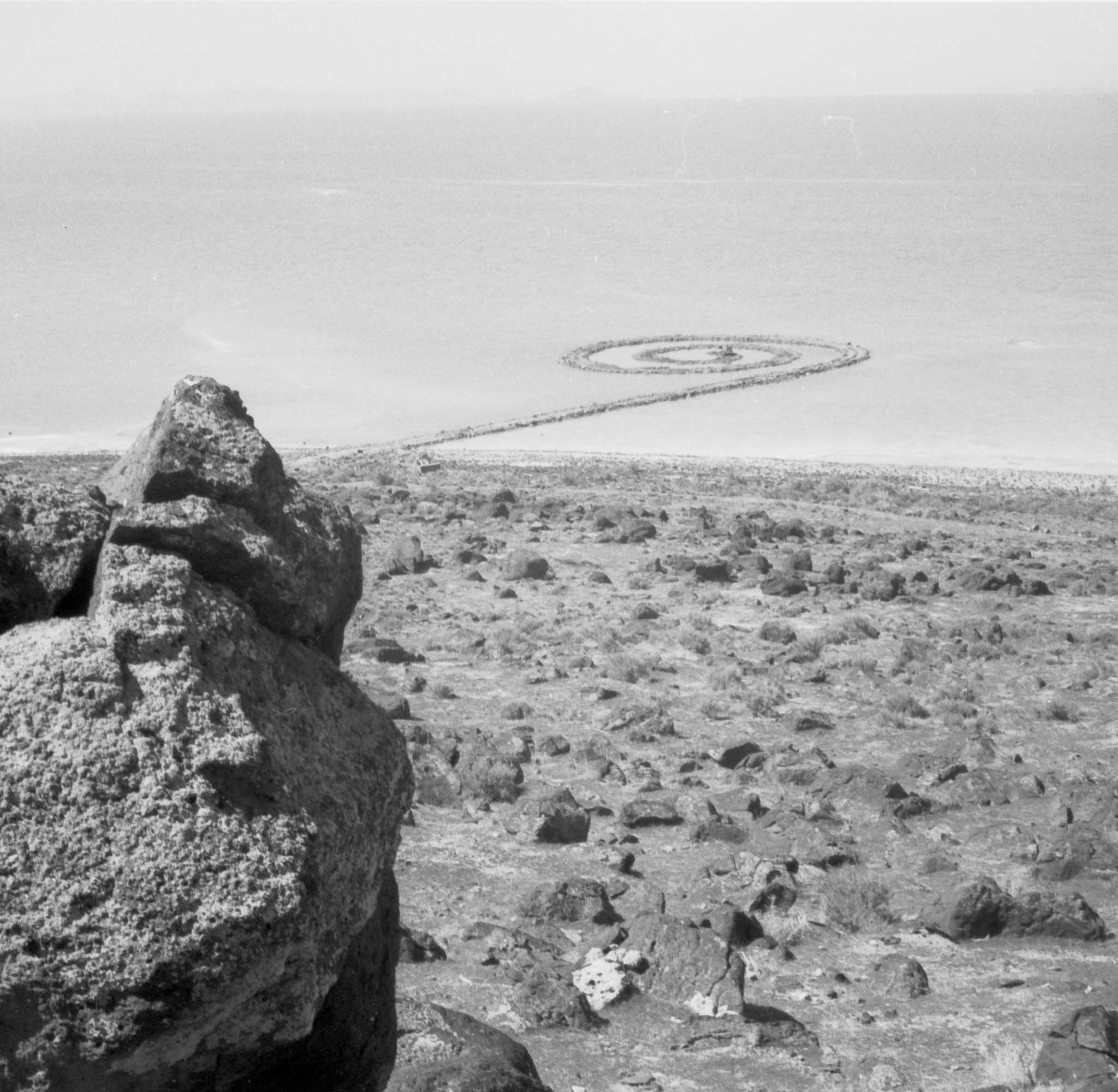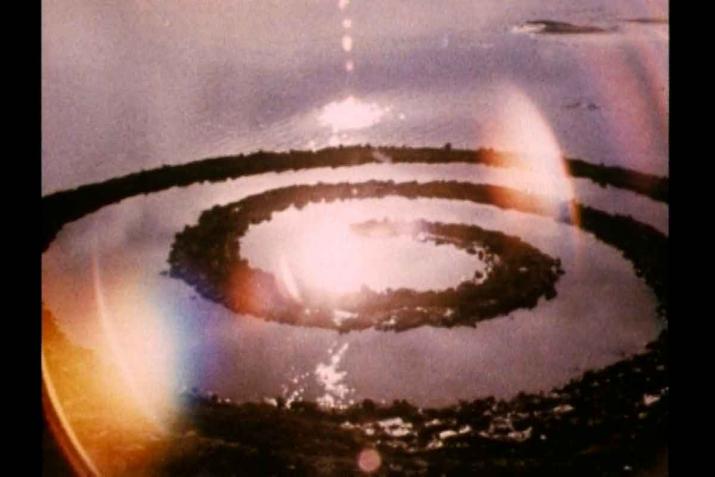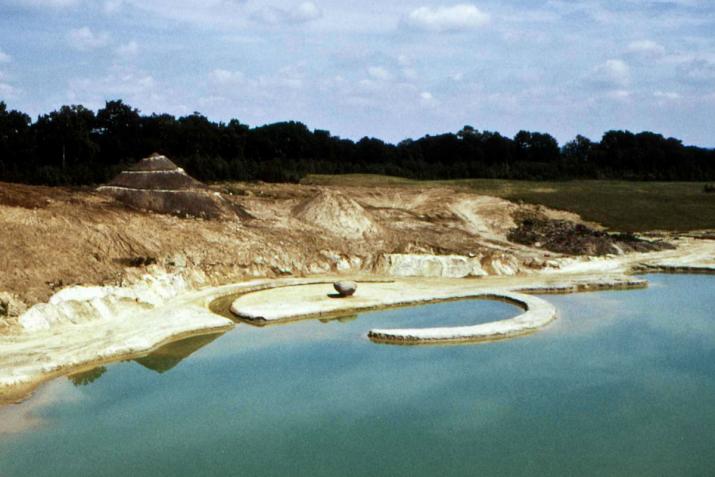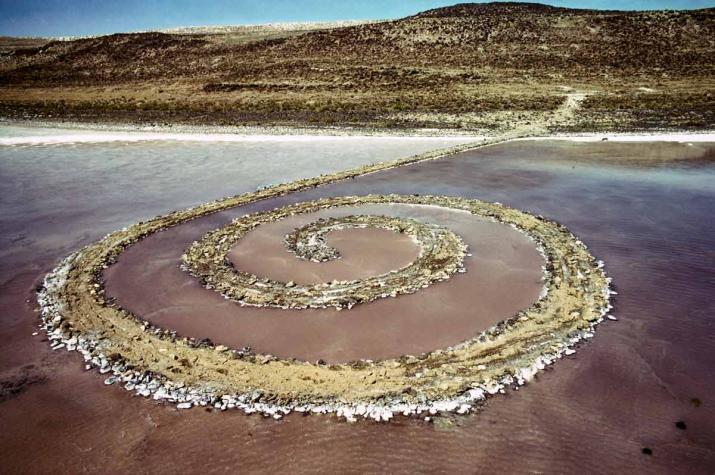
Spiral Jetty
Robert Smithson designed and directed the construction of his iconic work the Spiral Jetty in April 1970. The Jetty is a site-specific work, meant to interact with changing conditions of the surrounding water, land, and atmosphere. While located in a relatively barren, unpopulated place, Smithson chose the site not only because of the vast surrounding landscape, but with reference to nearby abandoned oil rigs and the Golden Spike monument marking the 1869 completion of the transcontinental railway. He understood these as industrial ruins, or entropic residues.
